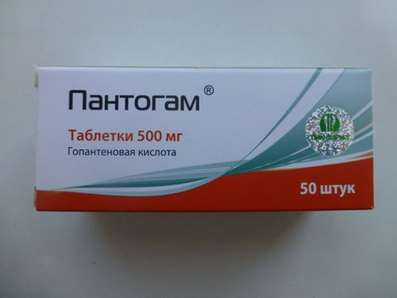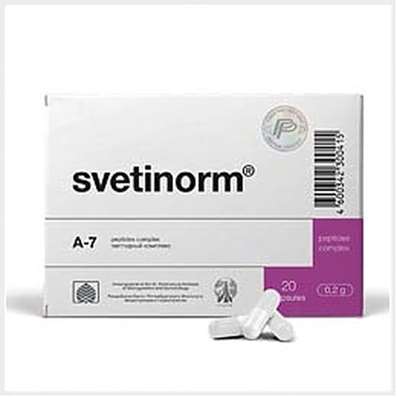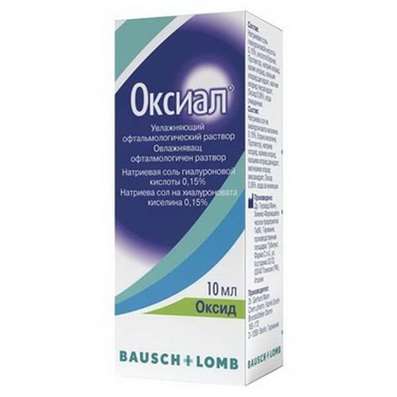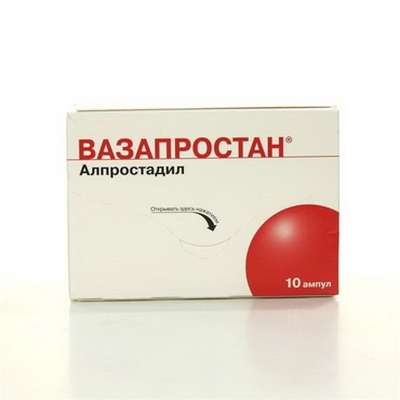Instruction for use: Salmecort
I want this, give me price
Active substance Salmeterol + Fluticasone
ATX Code R03AK06 Salmeterol + Fluticasone
Pharmacotherapeutic group:
Bronchodilator agent (beta2-agonists selective glucocorticosteroid + local) [beta-adrenergic agonist in combination]
The nosological classification (ICD-10)
J44 Other chronic obstructive pulmonary disease
Allergic bronchitis, Bronchitis asthma, Asthmatic bronchitis, wheeze bronchitis, Bronchitis is an obstructive, bronchi disease, Shortness of sputum in acute and chronic respiratory diseases, Cough in inflammatory diseases of the lung and bronchus, Reversible airflow obstruction, Reversible obstructive airway disease, Obstructive bronchitis disease, Obstructive lung disease, Obstructive bronchitis, Spastic bronchitis, Chronic lung disease, Chronic nonspecific lung diseases, Chronic obstructive pulmonary disease, Chronic obstructive bronchitis, Chronic obstructive airway disease, Chronic obstructive pulmonary disease, Restrictive lung pathology
J45 Asthma
Asthma physical effort, status asthmaticus, Bronchial asthma, Asthma lung flow, Bronchial asthma with obstruction of sputum discharge, Bronchial asthma heavy currents, Bronchial asthma physical effort, hypersecretory asthma, Hormone-dependent form of bronchial asthma, Relief of asthma attacks in bronchial asthma, Non-allergic asthma, nocturnal asthma, Exacerbation of asthma, Asthma attacks, Endogenous forms of asthma, Night asthma, Cough with bronchial asthma
Structure and Composition
aerosol for inhalation dose 1 dose
active substance:
salmeterol xinafoate 36.3 g
(Equivalent to 25 micrograms of salmeterol)
fluticasone propionate 50 mcg/ 125 mcg/ 250 mcg
Other ingredients: 1,1,1,2-tetrafluoroethane (HFA-134a) - 73,099 / 73,024 / 72,9 mg; polyethylene glycol 1000 - 0.01464 mg
The drug forms
Aerosol: white or almost white suspension is placed under pressure in an aerosol can of aluminum with a metering valve.
pharmachologic effect
anti-inflammatory, bronchodilatory, antiallergic.
pharmacodynamics
Salmekort - combined bronchodilatory agent (contains salmeterol and fluticasone propionate).
Salmeterol - selective agonist of beta2-adrenoceptor long action (at least 12 hours). Salmeterol molecule has a long side chain which binds to an external domain of the receptor. Due to these pharmacological properties, salmeterol more effective for the prevention of bronchospasm and gistaminindutsirovannogo longer causes bronchodilation over conventional short-acting beta2 agonists receptors. Effectively inhibits the release and prolonged lung tissue mast cell mediators, such as histamine, and LT PgD2. It suppresses the early and late stage allergic reactions; after administration of a single dose decreases bronchial hyperreactivity, inhibition of late phase persists for more than 30 hours after a single dose when bronchodilator effect is no longer present.
Fluticasone propionate - topical corticosteroids. With inhalational administration at recommended doses has a significant anti-inflammatory and antiallergic action, which reduces the severity of symptoms and reducing exacerbations diseases accompanied by airway obstruction. With prolonged use of inhaled fluticasone propionate in maximum doses daily and backup secretion of adrenal hormones remained in the normal range for adults and children. Residual decrease backup adrenal function may persist long after the therapy.
Pharmacokinetics
No evidence that the co-administration of inhaled salmeterol and fluticasone propionate effect on the pharmacokinetics of each of these substances.
Salmeterol. After inhalation administration of therapeutic doses are very low concentration of drug in plasma (200 pg / ml or less). With regular use of inhaled salmeterol in the systemic circulation is determined gidroksinaftoevaya acid in concentrations up to 100 ng / mL.
Fluticasone propionate. After inhalation the relative bioavailability of from 10 to 30%, depending on the drug delivery system. Systemic absorption occurs primarily in the lungs. Part of the inhaled dose may be swallowed, but its minimum systemic effect of the drug due to poor solubility in water and intensive first-pass metabolism in the liver. Fluticasone ingestion bioavailability is less than 1%. There is a correlation between the magnitude of the dose inhaled fluticasone and systemic effect, Vd is about 300 liters. It is metabolized in the liver to inactive metabolites by CYP3A4 of cytochrome P450. Less than 5% of the metabolites excreted in the urine. Plasma clearance is 1.15 l / min. T1 / 2 - about 8 hr.
Indications
Salmekort preparation for the regular treatment of asthma in patients who have shown combination therapy beta2-agonists and long-acting inhaled corticosteroids, in the following cases:
inadequate control of the disease against a background of continuing monotherapy with inhaled corticosteroids with occasional use of beta2-agonists short-acting;
adequate control of the disease during therapy with inhaled corticosteroids and beta2-agonists long-acting;
starting maintenance therapy in patients with persistent asthma (daily occurrence of symptoms, daily use of tools for the rapid relief of symptoms) in the presence of the indications for corticosteroids to achieve the purpose of disease control;
maintenance therapy in patients with chronic obstructive pulmonary disease, where the value of forced expiratory volume (FEV1) <60% of predicted values (up to inhaled bronchodilator) with repeated exacerbations in history and who have expressed symptoms persist despite regular bronchodilator therapy.
Contraindications
hypersensitivity to one or more components of the drug;
children's age (up to 4 years).
Precautions: acute or latent tuberculosis, fungal, viral or bacterial infections of the respiratory organs, hyperthyroidism (like all other inhaled medication containing corticosteroids); cardiovascular diseases, including with arrhythmias such as supraventricular tachycardia and premature beats, ventricular premature beats, atrial fibrillation (when taking any drug group sympathomimetic, particularly in excess of therapeutic doses, possible development of cardiovascular events, such as an increase in heart rate and Sad); hypokalemia (all sympathomimetic drugs at doses exceeding therapeutic, may cause a transient decrease in the level of potassium in the blood serum); glaucoma, cataracts, osteoporosis (either inhaled corticosteroids may cause systemic effects, especially with prolonged use at high doses; see "Special Instructions".); diabetes (there are very rare reports of increased blood glucose levels, see "Side Effects.").
Pregnancy and breast-feeding
Pregnant women and lactating women should be prescribed only if the expected benefit to the mother outweighs any possible risk to the fetus or child. Insufficient data on the use of salmeterol and fluticasone propionate during pregnancy and lactation.
Excessive concentration of active systemic beta2-agonists and corticosteroids affect the fetus. Extensive clinical experience with this class of drugs shows that when using therapeutic doses of these effects are not clinically significant. Salmeterol and fluticasone propionate have no genotoxicity.
The concentration of salmeterol and fluticasone propionate in plasma after inhalation of the drug in therapeutic doses is extremely low, so the concentration in human milk should be as low. No data on concentrations of salmeterol and fluticasone propionate in the breast milk of women during lactation.
Side effects
All adverse reactions reported below are characteristic of the active ingredients - salmeterol and fluticasone propionate - separately. The safety profile of the drug Salmekort profile does not differ from its undesirable reactions of active substances.
Adverse reactions shown below are listed in accordance with a lesion of organs and organ systems, and frequency of occurrence. The frequency is defined as follows: very common (≥1 / 10); commonly (≥1 / 100 and <1/10); uncommon (≥1 / 1000 and <1/100); rare (≥1 / 10,000 to <1/1000); very rare (<1/10000, including isolated cases).
Infections and infestations: common - candidiasis of the mouth and throat, pneumonia (patients with COPD).
Immune system: rarely - skin hypersensitivity reactions; rarely - anaphylactic reactions, angioedema (mainly facial swelling and oropharynx), bronchospasm.
From endocrine system: possible systemic effects include (see Precautions and "Cautions".) Rare - Cushing's syndrome, Cushingoid symptoms, adrenal suppression, growth retardation in children and adolescents, decrease in bone mineral density.
From a sight organ: seldom - a cataract; rarely - glaucoma.
On the part of metabolism and nutrition: rarely - hyperglycemia; very rarely - hypokalemia.
Mental disorders: rare - anxiety, sleep disorders; rarely - changes in behavior, including increased activity and irritability (especially in children).
From the nervous system: very often - headache (see "Special Instructions".); infrequent - tremor (see "Special Instructions".).
From the heart: Infrequent - increased heart rate (see Precautions and "Cautions".), Tachycardia, atrial fibrillation; rarely - arrhythmias, including ventricular arrhythmia, supraventricular tachycardia, extrasystoles.
The respiratory system, organs, thoracic and mediastinal disorders: often - hoarseness and / or hoarseness; rare - irritation of the throat; rarely - paradoxical bronchospasm (see "Special Instructions".).
Skin and subcutaneous tissue disorders: uncommon - bruising.
On the part of the musculoskeletal system and connective tissue: often - muscle cramps, arthralgia.
On the part of the digestive tract: rarely - dyspepsia, nausea.
Children and adolescents. It is theoretically possible development of systemic reactions, including Cushing's syndrome, Cushingoid symptoms, adrenal suppression, growth retardation in children and adolescents. Very rarely there may be anxiety, sleep disorders and behavioral disorders, including hyperactivity and irritability.
Interaction
Because of the risk of bronchospasm should avoid the use of selective and nonselective beta-blockers except when they are essential to the patient.
salmeterol
Interactions with ketoconazole should be avoided unless the benefits of the application does not exceed the potential risk of systemic adverse reactions during treatment salmeterol. There is a similar risk of interaction with other potent inhibitors of CYP3A4 (itraconazole, telithromycin, ritonavir).
fluticasone propionate
In normal situations inhaled fluticasone propionate are accompanied by low concentrations in the plasma as a result of the intensive first-pass metabolism and high systemic clearance under the influence of CYP3A4 of cytochrome P450 in the gut and liver. This clinically relevant interactions involving fluticasone propionate are unlikely.
Ritonavir is a highly active inhibitor of CYP3A4 enzyme can cause a sharp increase in the concentration of fluticasone propionate in plasma, resulting in significantly reduced serum cortisol concentrations.
Combined use of ritonavir causes side effects such as Cushing's syndrome and adrenal suppression. Given this, you should avoid simultaneous use of fluticasone propionate and ritonavir, unless the potential benefit to the patient outweighs the risk of systemic side effects of corticosteroids.
Other inhibitors of CYP3A4 produce negligible (erythromycin) and minor (ketoconazole) increased content of fluticasone propionate in plasma, in which almost no decrease in serum cortisol concentrations. Despite this, it is advisable to be careful while applying strong inhibitors of CYP3A4 (e.g. ketoconazole), since under such combinations are not excluded increasing the concentration of fluticasone propionate in plasma.
Xanthine derivatives, corticosteroids and diuretics increase the risk of hypokalemia (especially in patients with acute exacerbation of bronchial asthma, during hypoxia).
MAO inhibitors and tricyclic antidepressants increase the risk of side effects from the CCC.
Compatible with kromoglitsievoy acid.
Dosing and Administration
Inhalation. Only for inhalation use.
The patient should be informed that in order to achieve optimal effect the drug should be used regularly, even in the absence of clinical symptoms of asthma and COPD.
The doctor should regularly assess the effectiveness of patient treatment.
Determination of the duration of therapy and dose change is possible only on doctor's advice.
The initial dose is determined based on a dose of fluticasone is recommended for treatment of this disease severity. Then, the starting dose should be gradually reduced to the minimum effective dose. During treatment should be monitored regularly by a doctor in order to select the optimal dose. The patient should not change their own dose prescribed by the doctor.
Bronchial asthma. If the drug Salmekort 2 times a day provides symptom control, as part of reducing the dose to the lowest possible effective reduction in the frequency of dosing to 1 times per day.
The patient should be given a form Salmekort drug, which contains a dose of fluticasone propionate, the corresponding severity of the disease.
If treatment with inhaled corticosteroids do not provide adequate control of the disease, their replacement Salmekort drug at a dose of a therapeutically equivalent dose administered corticosteroids may improve the control of asthma. Patients who can control only for asthma using inhaled corticosteroids and their replacement drug Salmekort may allow to reduce the dose corticosteroids necessary for control of asthma.
Recommended dose: Adults and children 12 years and older - 2 inhalations (25 micrograms of salmeterol and 50 micrograms fluticasone propionate) 2 times a day, or 2 inhalation (25 mcg salmeterol and 125 mcg fluticasone propionate) 2 times a day, or 2 inhalations ( 25 mcg salmeterol and 250 mcg fluticasone propionate) 2 times a day; children 4 years and older - 2 inhalations (25 micrograms salmeterol and fluticasone propionate 50 mcg) 2 times per day.
All patients were taking the drug as maintenance therapy should receive medical advice after 6-12 weeks after the initial administration.
COPD. For adult patients, the maximum recommended dose is 2 inhalations (25 micrograms salmeterol and 250 mcg fluticasone propionate) 2 times a day.
Special patient groups
There is no need to reduce the dose of the drug Salmekort in elderly patients and in patients with impaired renal or hepatic function.
Instructions for use of the inhaler
Before each use, the inhaler be shaken.
Checking inhaler
Before the first application or if the inhaler has not been used for 2 days and more, it is necessary to inspect the inhaler. The wire 4 is pressed (inhalation) in the air.
Using inhaler
1. Remove the protective cover from the mouthpiece. This mouthpiece should remain firmly attached to the bottle (inhaler); If the inhaler is stored without protective cover, check the mouthpiece for dirt.
2. Take the inhaler mouthpiece in the hand down so that one finger was on the bottom of the inhaler and the other finger or two - at the top end of the inhaler. Make a breath and put the mouthpiece between your teeth.
3. Firmly grasp the mouthpiece lips and gently tilt the head back. Slowly begin to inhale and simultaneously press the bottom of the canister. Continue to breathe through.
4. Remove the inhaler from the mouth and hold their breath for 10 seconds or as much as comfortable. Slowly exhale.
Note: after each inhalation is necessary to rinse the mouth and / or throat with water. This will help reduce the dryness associated with taking the drug. The interval between inhalations should not be less than 1 min. During the re-inhalation repeat steps 1-4.
After use, close the mouthpiece protective cap.
The first few inhalations are recommended, checking himself in the mirror. If the patient sees that there is a leak of the drug through the mouth or opening between the body and the mouthpiece of the inhaler, it shows the wrong technique inhalation.
Inhalation of small children should be carried out under the supervision of an adult. Older children and adults with weak hands should hold the inhaler with both hands. In this case both index fingers should be placed at the top of the inhaler and both thumbs - on the basis of lower die.
Cleaning the inhaler
Cleaning the inhaler should be held at least once a day ..
1. Remove the metal canister with a drug from the inhaler body. Remove the spray nozzle.
2. Wash the mouthpiece and the inhaler body under warm running water.
3. Carefully wipe with a dry cloth or cotton swab. Avoid overheating.
4. Assemble the inhaler.
After using all the doses indicated on the package, a metal canister should be discarded.
Overdose
We do not recommend use of the drug in doses higher than those specified in the section "How to use and dosage." It is important to regularly review the patient's dosage regimen and reduce the dose to the lowest of the recommended ensuring effective control of the disease (see. "Dosage and administration").
Symptoms typical of excessive beta2-adrenergic stimulation and include tremor, headache, tachycardia, increased Sad and hypokalemia. Acute overdose of fluticasone propionate when inhaled can cause a temporary suppression of the hypothalamic-pituitary-adrenal system. This is not usually requires some extra measures because normal adrenal function is restored within a few days. Before the drug in doses higher than those recommended for a long period of time may be a significant inhibition of adrenocortical function. Described rare cases of acute adrenal crisis, which occurred mostly in children treated with doses higher than recommended for a long time (months or years). Acute adrenaline crisis manifested hypoglycemia accompanied by confusion and / or convulsions. Situations that can serve as a triggering factor of acute adrenal crisis, include trauma, surgery, infection or any rapid reduction in the dose of inhaled fluticasone propionate, a component of the drug Salmekort.
Treatment: no specific. It is supportive therapy and observe the patient's condition.
special instructions
Salmekort The drug is not intended to relieve acute symptoms, since in such cases should be applied rapidly and short-inhaled bronchodilator (eg salbutamol). Patients should be informed of that they have always had a drug on hand for relief of acute symptoms.
The combination of salmeterol and fluticasone propionate can be used for the initial maintenance therapy in patients with persistent asthma (daily occurrence of symptoms or daily use of cupping) in the presence of indications for corticosteroids and determining their approximate dosage.
More frequent use of short-acting bronchodilators to relieve symptoms indicates deterioration of disease control, and in such situations the patient should consult a doctor.
A sudden and increasing deterioration in control of asthma is potentially life threatening, and in such situations the patient should also seek medical attention. The physician should consider the possibility of higher doses of corticosteroids. If your dose Salmekort product does not provide adequate control of the disease, the patient should also seek medical advice.
Patients with asthma should not be cut back sharply Salmekort drug treatment because of the risk of exacerbation, the dose should be reduced gradually under medical supervision.
In patients with COPD, removal of the drug may be associated with symptoms of decompensation and requires medical supervision. In patients with COPD receiving Salmekort drug may increase the incidence of pneumonia (see. "Side effects"). Physicians should be aware of the possibility of pneumonia in patients with COPD as the clinical picture of an exacerbation of COPD and pneumonia are often similar.
Any inhaled corticosteroids can cause systemic reactions, especially with prolonged use at high doses; but the likelihood of such symptoms are much lower than in the treatment with oral corticosteroids (see. "Overdose"). Possible systemic effects include Cushing's syndrome, Cushingoid features, adrenal suppression, growth retardation in children and adolescents, decrease in bone mineral density, cataract and glaucoma. Therefore, in the treatment of asthma it is important to reduce the dose to the lowest ensuring effective control of the disease.
In emergency and planned situations that can cause stress, you should always keep in mind the possibility of suppression of adrenal function and be ready to use corticosteroids (see. "Overdose").
If resuscitation or surgical procedures require a degree of adrenal insufficiency.
It is recommended to regularly measure the growth of children who receive long-term treatment with inhaled corticosteroids.
Patients transferred from oral corticosteroids to inhalation therapy of fluticasone propionate, in view of the possibility of adrenal suppression should be treated with extreme caution and regular monitoring of their function of the adrenal cortex. When transferring patients receiving systemic corticosteroids allergic reactions may occur on inhalation therapy (eg allergic rhinitis, eczema), which previously suppressed by systemic GCS. In such situations, it is recommended to carry out symptomatic treatment with antihistamines and / or topical preparations, including SCS for local use.
After initiation of treatment with inhaled fluticasone propionate systemic corticosteroids should be lifted gradually, and such patients should be in possession of a special patient card, containing an indication of the possible need for additional administration of SCS in stressful situations.
In patients with acute exacerbation of asthma, hypoxia is necessary to control the concentration of potassium ions (K +) in the plasma.
There are very rare reports of increased blood glucose levels, and this should be borne in mind when appointing combination with salmeterol fluticasone propionate in patients with diabetes mellitus (see. "Side effects").
Because of the potential for systemic effects of GCS, including Cushing's syndrome and adrenal suppression, should avoid joint use of fluticasone propionate and ritonavir, except in cases where the potential benefit to the patient outweighs the risk associated with the systemic effects of GCS (see. "Interaction") .
When receiving salmeterol risk of serious adverse reactions on the part of the respiratory system and death in African-American patients, presumably higher than in other patients. The value of pharmacogenetic factors or other reasons unknown. Effect of concomitant use of inhaled corticosteroids on the risk of death in patients with asthma has not been studied.
As with other inhaled medications, Salmekort may cause paradoxical bronchospasm, manifesting increase of breathlessness immediately after application. In this case, you should immediately apply the quick and short-inhaled bronchodilator, cancel Salmekort and start, if necessary, alternative therapy (see. "Side effects").
You may experience side effects associated with the pharmacological action of beta2-agonists, such as tremor, subjective feeling of palpitations and headache. However, these reactions are of short duration, and their severity decreases with regular therapy (see. "Side effects").
Effects on ability to drive and use machines. In clinical studies, there were obtained data on the effect of the drug on the ability to drive vehicles and other mechanisms, but consider the side effects, which can cause the drug.
release Form
Aerosol for inhalation dose, 25 mcg + 50 mcg / dose, 25 micrograms + 125 micrograms / dose, 25 mg + 250 mg / dose. The aerosol spray can with an aluminum valve dispensing action and the mouthpiece with protective cover, 120 doses. Balloon in paper cartons.
Conditions of supply of pharmacies
On prescription.
Storage conditions
The temperature is not above 25 ° C (do not freeze).
Keep out of the reach of children.
The shelf life
2 years.
Do not use beyond the expiration date printed on the package.

 Cart
Cart





